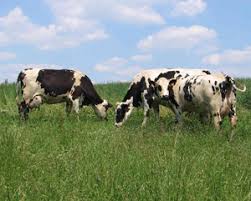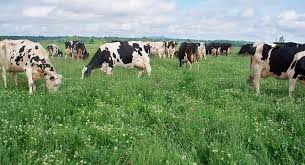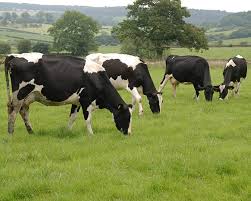Permanent pastures are established for many years (several decades) to provide a continuous feed source for livestock. These pastures can either be native or sown, depending on the farmer’s choice.
They are commonly established in farms with large numbers of livestock to prevent feed shortages during periods of scarcity. Permanent pastures serve as the main source of feed for livestock that are intensively managed.
Read Also: Feijoas: History, Nutrition, Health Benefits and Growing Guide
Definition and Types of Permanent Pastures

Permanent pastures are primarily established for the purpose of feeding livestock. These pastures may be native or sown and are designed to last for several decades. They consist of both annual and perennial species, which feature underground storage organs such as rhizomes and stolons.
These storage organs allow the pasture species to survive harsh conditions, including the dry season, fire incidents, intense defoliation, and overgrazing. When a pasture species does not produce viable seeds annually, it can still be used in permanent pastures.
These pastures are difficult to eradicate once established and are usually planted on fertile soils. They are common in profitable livestock enterprises, such as dairy and beef farming.
Read Also: Pawpaws: History, Nutrition, Health Benefits and Growing Guide
Characteristics and Establishment of Permanent Pastures

Permanent pastures are characterized by species with underground rhizomes and stolons, which serve as storage organs, enabling these pastures to survive harsh environmental conditions. Once established, reseeding is not necessary.
These pastures can consist of single or mixed species, depending on the farmer’s preference. They are typically established on fertile soils that are neither waterlogged nor rocky. Proper site preparation, following recommended agronomic procedures, is essential for successful establishment. Once these pastures are established, they are difficult to eradicate.
Advantages and Disadvantages of Establishing Permanent Pastures
Establishing permanent pastures offers several advantages:
- They help retain soil structure due to their underground storage organs.
- They provide a large quantity of forage for livestock.
- They are resilient to natural and human-made hazards, such as fire outbreaks and drought.
- They can cover a large area of land through rapid seed production.
- Farmers can generate extra income from the sale of harvested forage.
However, establishing permanent pastures also has some disadvantages:
- They are expensive to establish and maintain.
- Livestock may be forced to feed on a single pasture species, limiting choice.
- They can become hosts for certain disease vectors, such as snails.
This article has outlined the major characteristics, advantages, and disadvantages of permanent pastures. While these pastures offer valuable long-term benefits for livestock feeding, it is important to consider the high costs involved in their establishment and maintenance.
Do you have any questions, suggestions, or contributions? If so, please feel free to use the comment box below to share your thoughts. We also encourage you to kindly share this information with others who might benefit from it. Since we can’t reach everyone at once, we truly appreciate your help in spreading the word. Thank you so much for your support and for sharing!

